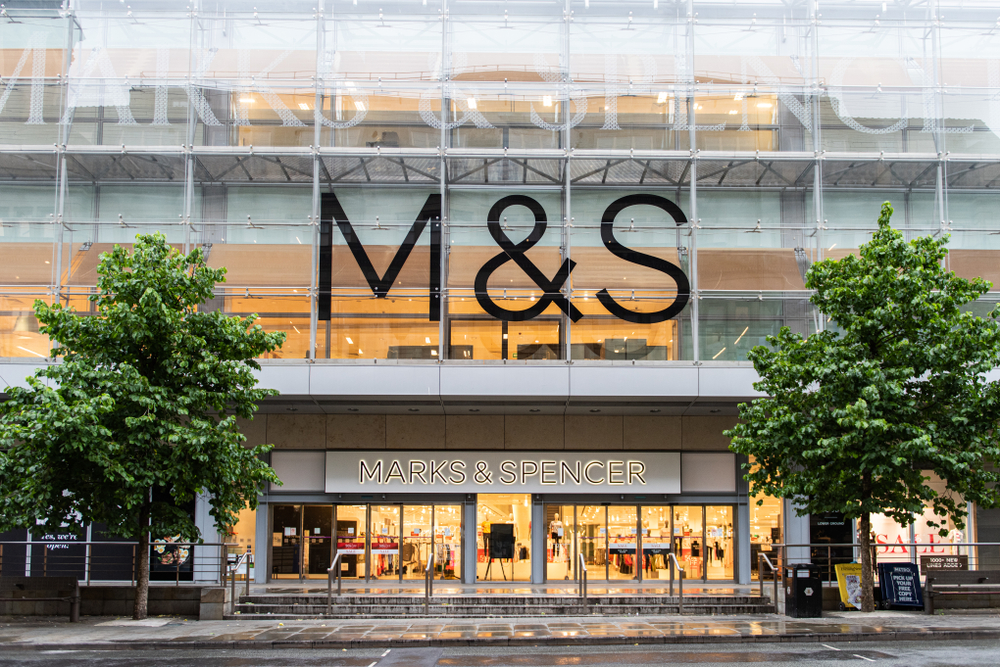At the end of February eBay announced the latest round of its Circular Fashion Fund, which sees six chosen small businesses receiving £15,000 in funding alongside a place in a six-week mentoring programme.
Katie Searles sat down with Jemma Tadd, head of fashion at eBay UK, and Layla Sargent, founder of repair platform The Seam, to discuss what this fund is all about.

Q: Jemma, why did eBay establish the Circular Fashion Fund?
JT: We’ve been running the fund for two years now. It was something that I was really passionate about doing. There’s lots of talk within the industry about wanting to drive change, but at eBay, we wanted to take charge and create something that takes action.
In order to take some serious steps forward, we have to innovate together. At eBay, we have an amazing community that drive the circular economy forward every day, made up of thousands of circular businesses and charities. We wanted to lean on this community to drive better change.
We already have them on the platform and I really wanted to make sure that we were encouraging an innovation first approach for fashion. We started this fund to go out there with eBay wanting to support these small businesses and any way that we can do that.
I love doing it, I love doing the mentorship, I love running it, I love hearing about what the businesses are doing. It’s incredibly important to us.

Q: Sticking with the mentorship programme – Layla, as a previous winner, what did the Seam get working with other small businesses? How important is collaboration and partnership in cleaning up fashion?
LS: It is everything. If you look at what kind of circular business models are spearheading the movement right now – it’s rental, resale and repair. All three of which are so inherently and intrinsically reliant on the other one.
For example, you can only rent a dress out X number of times if you’re caring for it and repairing it in between wears. The same with resale. You’re only going to get the highest possible resale value for an item if it’s been restored and repaired carefully.
All of these companies are growing simultaneously. A rising tide lifts all ships, and not one of these companies can excel without the support of the others.
Q: Is there an element of having to go right back to the start, to the manufacturing of these products? Does that need to be better? These products need to be made to last, to allow for repair, resale, rental, to function properly. Is that a barrier?
LS: It’s really important to close this loop. We hear that saying all the time – it’s the same with circularity and sustainability. I do wonder what it means to each person when they’re talking about it. For me closed loop really means – how can we take the data and the knowledge that we have from repairs so we understand what people are doing with our items after purchasing them.
Then how can we take that data and feed it back into the design process, so moving forward when people are designing new collections they already know they are actually designed to last.
For example, if a jacket or a coat with a weight of fabric results in the zipper breaking. Or the average person only kept it for six months, because of the fabric. Feeding that data back so we learn now from post purchase behaviours, feeding it back into the first manufacturing design process is incredibly important and also advantageous.
Q: For eBay, as a marketplace, how does running a fund like this fit into your wider work to foster a more circular approach to fashion?
JT: Our main aim is to continue to tackle waste and support the circular economy for fashion. We started to change perceptions with the Love Island partnership, and it’s now at the forefront of everything that we do. This is another way to really think about our selling community.
eBay thinks about both our buyers and sellers, but really think about the focus on the sellers and how we support them.
Q: And how do you work with retailers to utilise eBay as a platform to be more circular themselves
JT: For our retailers, we’ve done two things. First of all is the investment. Last year we acquired Certilogo – the digital passport ID.
We want to help brands win. And what I mean by that is when we speak to brands, we say we’ll work with you on the whole product life cycle.
When we first started working with River Island we really focused on the outlet business. Then we’ve transitioned into thinking about what returns look like; what does pre-loved require; and what does take back do?
We’re very fortunate that due to the size of eBay and our customer base, that we can really help people to do that. We have incredibly strong partnerships to help facilitate the circular economy. We know we can’t do it by ourselves, so let’s work with these partners to see how we can solve it.
The Circular Fashion Fund will return again this September and it’s going global, expanding to cover four markets – Australia, Germany, UK, US.
Learn more about circular business models at the brand new event from RetailX. SustainabilityX, part of the Spring Festival, delves into the challenges, future possibilities, and realities that will significantly impact the future of retail and allow brands to maintain trust in an industry in which consumers are wary of greenwashing.
Stay informed
Our editor carefully curates two newsletters a week filled with up-to-date news, analysis and research, click here to subscribe to the FREE newsletter sent straight to your inbox and why not follow us on LinkedIn to receive the latest updates on our research and analysis.










